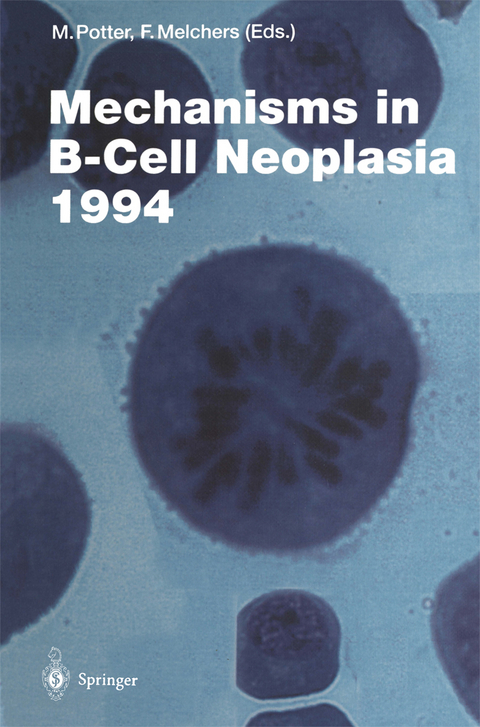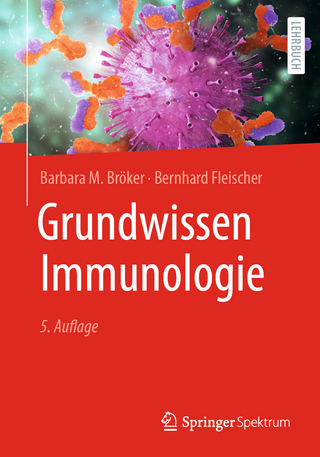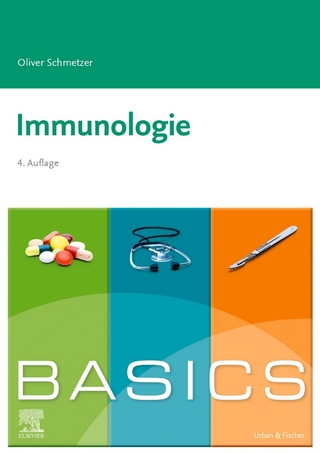
Mechanisms in B-Cell Neoplasia 1994
Springer Berlin (Verlag)
978-3-642-79277-9 (ISBN)
The discussion focusses on:
- Cellular components of the "myeloma clone"
- Genomic instability in B-cells and B-cell tumors
- The CD5 antigen and B1 cells
- Regulation of cell cycle and apoptosis
- Role of IL-6, BCL-2, BCL-1, myc in B-cell development
Michael Potter is Reader in the Philosophy of Mathematics at Cambridge University. He is the author of Sets (OUP, 1990), Reason's Nearest Kin (OUP, 2000), Set Theory and its Philosophy (OUP, 2004), and Mathematical Knowledge (edited with Mary Leng and Alexander Paseau, OUP, 2007).
The "Myeloma" Clone.- Detection of Peripheral Blood Myeloma Cells by Three-Color Flow Cytometry.- Detection of B-Cells Clonally Related to the Tumor Population in Multiple Myeloma and MGUS.- The Blood B-Cells and Bone Marrow Plasma Cells in Patients with Multiple Myeloma Share Identical IgH Rearrangements.- Multiple Myeloma Clones are Derived from a Cell Late in B Lymphoid Development.- The Myeloma/Plasmacytoma Phenotype.- Multiple Myeloma - Recent Developments in Molecular and Cellular Biology.- Potential Role of CD28-B7 Interactions in the Growth of Myeloma Plasma Cells.- B-1 (CD5+) B-Cells as a Marker of Immune Dysregulation in Multiple Myeloma.- Genes Expressed Selectively in Murine and Human Plasma Cell Neoplasms.- Molecular and Biological Role of CD40 in Multiple Myeloma.- The Proliferation-Associated Cytosolic Protein Lap 18 (stathmin) is Expressed at Atypically Low Levels in BALB/c Plasmacytom Cells.- Plasmacytoma Induction in Mice.- Induction of Plasmacytomas in Genetically Susceptible Mice with Silicone Gels.- Strain-Related Cellular Mechanisms as a Determinant for Susceptibility and Resistance to PC Induction.- Human and Mouse B-Cell Lymphomas.- Alterations of the BCL-6 Gene in Diffuse Large-Cell Lymphoma.- Classification of Mouse Lymphomas.- The Natural History of a Lymphoproliferative Disorder in Aged NZB Mice.- EBV Infection of B-CLL Cells in Vitro Potentiates Their Allostimulatory Capacity if Accompanied by Acquisition of the Activated Phenotype.- A New Form of Epstein-Barr Virus Latency in vivo.- Pharmacologic Activation of Expression of Immunodominant Viral Antigens: A New Strategy for the Treatment of Epstein-Barr-Virus-Associated Malignancies.- Rapid Identification of Novel Human Lymphoid-Restricted Genes by Automated DNA Sequencing ofSubtracted cDNA Libraries.- Tumorigenesis in Mice with an SV40T Antigen Transgene Driven by the Immunoglobulin ?1 Heavy Chain Germline Promoter.- Circulating B-Cells in Follicular Non-Hodgkin's Lymphoma Show Variant Expression of L-Selectin Epitopes.- Light Chain Loss and Reexpression Leads to Idiotype Switch. Surrogate Light Chains are Probably Responsible for this Process.- Growth Regulation: IL-6.- Regulation of Terminal differentiation of Human B-Cells by IL-6.- Sequence, Expression and Function of an mRNA Encoding a Soluble Form of the Human lnterleukin-6 Receptor (sIL-6R).- The Late B-Cell.- CD5 Transgenic Mice.- Activation of B-Cells by sIgM Cross-Linking Induces Accumulation of CD5 mRNA.- GP130 in Human Myeloma/Plasmacytoma.- Analysis of Antigen-Driven Positive and Negative Selection of Phosphocholine-Specific Bone Marrow B-Cells.- Growth Regulation - C-myc.- Role of the Rel-Family of Transcription Factors in the Regulation of c-myc Gene Transcription and Apoptosis of WEHI231 Murine B-Cells.- c-myc Transcription is Initiated From Po in 70% of Patients with Multiple Myeloma.- Clustered Mutations in the Transcritpional Activation Domainof Myc in 8q24 Translocated Lymphomas and their Functional Consequences.- Association with C-Myc: An Alternate Mechanism for c-Myc Function.- The Role of Ornithine Decarboxylase in c-Myc-lnduced Apoptosis.- Growth Factor Regulation of Cell Cycle Progression and Cell Fate Determination.- Growth Regulation: Apoptosis, BCL-2, Dormancy.- Defective Apoptosis due to Bcl-2 Overexpression May Explain Why B-CLL Cells Accumulate in G0.- Lyn Tyrosine Kinase Signals Cell Cycle Arrest in Mouse and Human B-Cell Lymphoma.- A Link Between the Antioxidant Defense System and Calcium: A Proposal for the Biochemical Function of Bcl-2.-Heterodimerization with Bax is Required for Bcl-2 to Repress Cell Death.- Growth Regulation: Cyclin D1, ABL.- Mantle Cell/Centrocytic Lymphoma: Molecular and Phenotypic Analysis Including Analysis of the bcl-1 Major Translocation Cluster by PCR.- Cyclin D1 as the Putative bcl-1 Oncogene.- Pre-B-Cells Transformed by ts Abelson Virus Rearrange ? and ? Genes in Early G1.- Development of btk Transgenic Mice.- Genomic Instability: General Topics.- Genomic Instability in B-Cells and Diversity of Recombinations That Activate c-myc.- Broken-Ended DNA and V(D)J Recombination.- Mutations in the Coding Region of c-myc Occur Independently of Mutations in the Regulatory Regions and are Predominantly Associated with myc/lg Translocation.- The Generation of Pvt-1/Ck Chimeric Transcripts as an Assay for Chromosomal Translocations in Mouse Plasmacytomas.- Interacisternal A-particle (IAP) Genes show Similar Patterns of Hypomethylation in Established and Primary Mouse Plasmacytomas.- Regulatory Elements in the Immunoglobulin Kappa Locus Induce c-myc Activation in Burkitt's Lymphoma Cells.- Genomic Instability: Heavy Chain Switch Related Problems.- Illegitimate Recombinations Between c-myc and Immunoglobulin Loci Are Remodeled by Deletions in Mouse Plasmacytomas But Not in Burkitt's Lymphomas.- Sy3 SNIP and SNAP Binding Motifs are Occupied in vivo in Mitogen Activated l.29? + Cells.- Chromosomally Integrated Retroviral Substrates are Sensitive Indicators of an Antibody Class Switch Recombinase-Like Activity.- The Role of BSAP in Immunoglobulin Isotype Switching and B-Cell Proliferation.
| Erscheint lt. Verlag | 10.1.2012 |
|---|---|
| Reihe/Serie | Current Topics in Microbiology and Immunology |
| Zusatzinfo | XXV, 458 p. 12 illus. in color. |
| Verlagsort | Berlin |
| Sprache | englisch |
| Maße | 155 x 235 mm |
| Gewicht | 732 g |
| Themenwelt | Medizin / Pharmazie ► Medizinische Fachgebiete ► Mikrobiologie / Infektologie / Reisemedizin |
| Medizin / Pharmazie ► Medizinische Fachgebiete ► Onkologie | |
| Studium ► Querschnittsbereiche ► Infektiologie / Immunologie | |
| Naturwissenschaften ► Biologie ► Mikrobiologie / Immunologie | |
| Schlagworte | Antibody • Antigen • Apoptosis • Cancer • Cell • classification • Geschwulst • Infection • Karzinom • Krebs • Lymphom • Lymphoma • Lymphomas • multiple myeloma • Neoplasma • Oncogene • Oncology • pharmacology • plasmocytoma • Tumor • Virus |
| ISBN-10 | 3-642-79277-4 / 3642792774 |
| ISBN-13 | 978-3-642-79277-9 / 9783642792779 |
| Zustand | Neuware |
| Haben Sie eine Frage zum Produkt? |
aus dem Bereich


